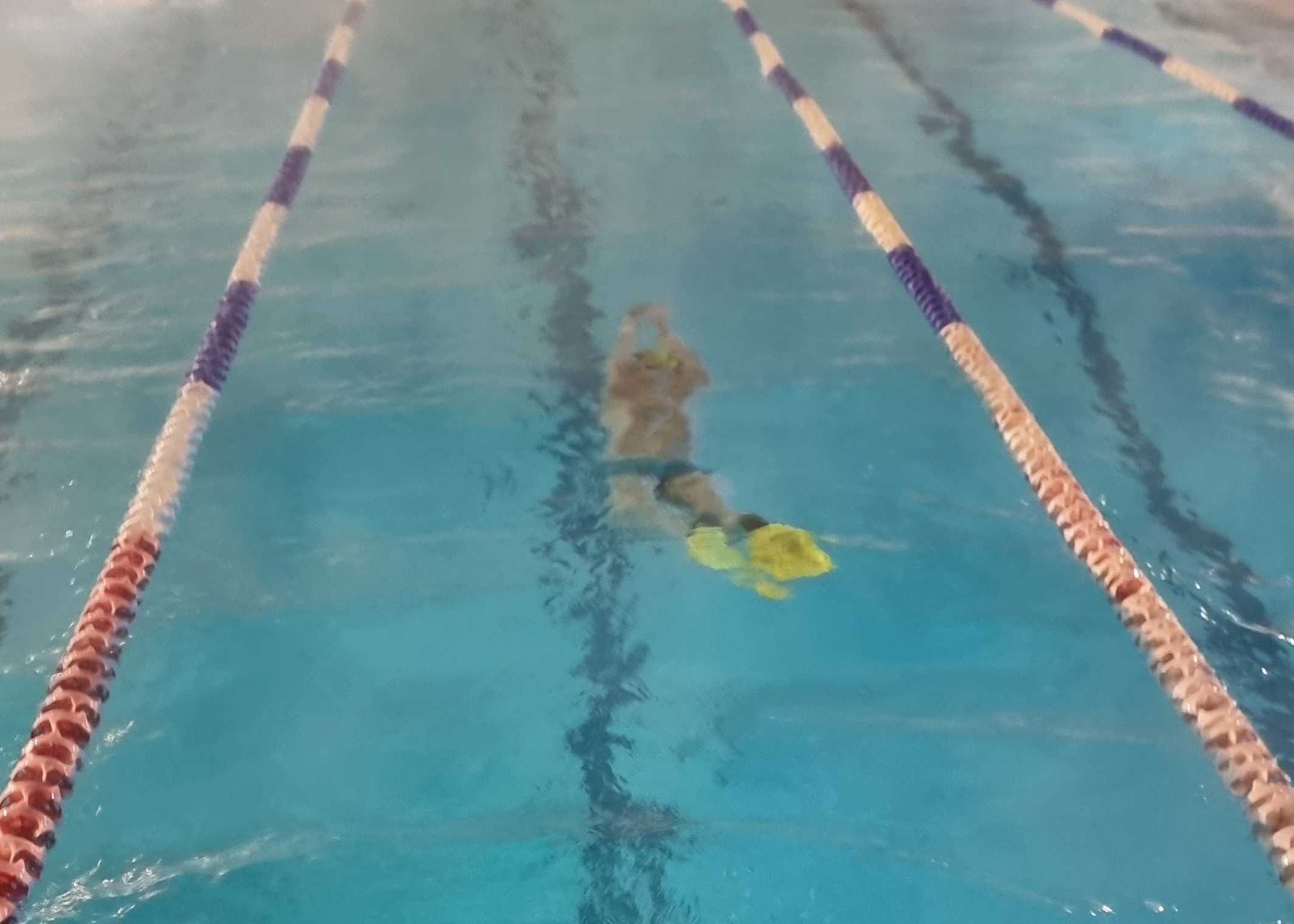Here’s a way to build strength for those who don’t like lifting iron
After years of resisting it, I recently started lifting weights.
I had previously insisted that swimming, combined with a bit of running, was enough exercise. But the real reason is that I never enjoyed the gym.
Now, I have to confess, weight training has helped me feel stronger in the water and while I’m running. I’ve also seen improvements in other swimmers who do weights.
I solved the gym problem by buying a small set of weights and a pull-up bar that I’ve fitted over our living room door. The aesthetics aren’t great but it’s got the whole family doing pull-ups at least.
Even so, I find lifting lumps of iron uninspiring. I’d much rather be in the water or out on the trails. I therefore proactively added some exercises to my pool swimming, specifically to build strength.
They’re not a true substitute for land-based training but are a good compromise if you can’t face the gym or you don’t have weights at home. Additionally, they can directly help with your swimming.
Push off and glide
How to do it: Exactly as it says!
- Hold on to the wall with one hand, and the other pointing away from the wall. Legs bent into a squat.
- Let go of the wall, swing your hand around to join the leading hand as you’re sinking.
- Lock your hands and arms into a streamlined position and push off the wall hard with both legs.
- Make sure you do a final flick with your feet for extra power. Aim slightly down and tighten into a full streamline.
- After a second or two, while you’ve still got momentum, adjust the angle of your hands to direct you back to the surface.
- See how far you can get before you come to a stop. Repeat and try to go further.
What this does: This explosive exercise helps build strength through your lower body. Holding the streamline strengthens your core and helps improve shoulder mobility. This all translates beautifully into more efficient swimming.
Dolphin kicks on back (with fins)
How to do it: Pull on a pair of swimming fins if you’re allowed to use them in your pool (if not, you can do it without), push off the wall on your back, lock your arms above your head in streamline position and propel yourself using dolphin kicks. Ensure you start the movement from your chest and engage your whole body. Try varying the amplitude and frequency of the movement.
What this does: This works your core and legs in a way that’s directly translatable to swimming, especially if you like butterfly! It also helps spine and shoulder mobility. Start cautiously if you are prone to back problems.
Shallow water walking
How to do it: Walk in water anywhere between knee and mid-chest depth. It can be tricky in a pool – and you will certainly get odd looks – so this one might be best done at a beach. To be more subtle in the pool, when you turn in the shallow end, walk 10 paces before you start swimming again.
What it does: Driving your legs forward against the water pressure is good for your hip flexors, which can get weak from lots of sitting. It also helps you practise balance!
Pool muscle-ups
How to do it: While in the water, face the wall. Put your hands on the side and using your arms only (no kicking), muscle your way out of the water. The greater the distance between the pool deck and the water level, the harder this gets. Lower yourself back into the water and repeat. You can also practice water-supported dips if you only partially lower yourself before pushing up again.
What it does: This is a great upper body workout, engaging your chest, lats and triceps – and it’s beneficial for all strokes. But take care not to slip and bang your mouth against the poolside.
Swimming with paddles or using drag shorts
How to do it: Put on a pair of swimming paddles and/or drag shorts and swim normally.
What it does: Increasing the load either through making your hands larger (paddles) or increasing drag (shorts) should build strength through the stroke cycle.
I’ve added this as it is a standard strength-building exercise for swimmers. But be careful. Swimming with paddles can lead to overuse injuries, especially if your technique isn’t good. I’m also not a fan of swimming with shorts, as a big goal in swimming is to reduce drag. Wearing drag shorts may alter your position in the water and allow bad habits to creep in.
Create your own
When my mum was recovering from a broken hip, she used the pool for rehabilitation, holding on to the wall in the deep end and doing various leg swings – at least she did until the lifeguard told her that she should stick to swimming! Creativity in the pool is a good thing, and I would have expected more leniency from the lifeguard for an 85-year-old recovering from injury.
Still, it’s usually best to stick with things that look like swimming exercises, but turn your focus to power and explosive action to build strength. It also adds variety to your swimming training. If the water is your happy place (rather than the gym), it makes sense to maximise the benefits you get from it. And even if you are managing to fit more traditional strength training into your life, doing these in the pool will boost your swimming.

